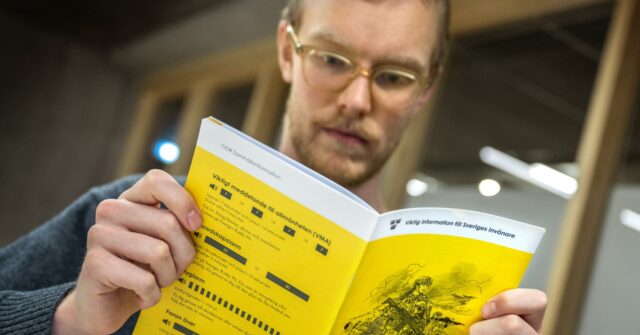In light of ongoing global tensions and the war in Ukraine, Sweden has taken proactive measures to prepare its citizens for potential armed conflicts. The Swedish government recently distributed a revised pamphlet titled “If Crisis or War Comes,” aimed at equipping the populace with vital survival information during emergencies. This initiative was partly inspired by Russia’s increasingly aggressive posturing, particularly under President Vladimir Putin, who has asserted that any conventional attack on Russia, especially if backed by a nuclear power, will be treated as a joint assault on the nation. The timing coincides with the 1,000th day since Russia’s invasion of Ukraine, emphasizing the region’s rising security concerns.
The updated pamphlet reflects a significant shift in Sweden’s defense strategy, which has been reevaluated due to the deteriorating security climate in Europe. The last version of the booklet was issued six years ago, underscoring the stark transformation in geopolitical relations since then. The Swedish government has recognized the necessity of preparing its citizens for various scenarios, including military conflicts, communications disruptions, and power outages. The pamphlet is provided in multiple languages—Swedish, English, Farsi, Arabic, and Somali—to ensure it reaches a broad audience. Finland and Norway are also enhancing their crisis preparedness advice, showcasing a collective response among Nordic nations to the ongoing threats.
Sweden’s Civil Defence Minister, Carl-Oskar Bohlin, has articulated the urgency behind this initiative, noting the need for citizens to be aware of the changing global landscape. Bohlin’s statements have included stark warnings about the possibility of war reaching Swedish soil, indicating a significant shift from the nation’s previous defense posture. He expressed concern that efforts to reintegrate a “total defense” approach were progressing too slowly, suggesting that historical complacency in Sweden’s defense might no longer be tenable in the current situation. The historical context is important; Sweden’s defense infrastructure was heavily downsized after the Cold War, and the recent conflicts have forced a reassessment of how Sweden prepares for threats.
The Nordic nations’ response to regional instability is not an isolated occurrence; Sweden and Finland have recently joined NATO as a strategic alignment against Russian aggression. This development highlights a broader transformation within European defense strategies, particularly in Northern Europe, emphasizing a commitment to collective security. The desire to enhance defense capabilities stems from Finland’s long-standing military readiness due to its history with both the Soviet Union during World War II and its proximity to Russia. This historical data informs current policy decisions regarding military preparedness.
Vladimir Putin’s aggressive stance towards NATO expansion has raised alarms within the Kremlin, warning that Sweden and Finland’s membership in the alliance would provoke “military and political repercussions.” This rhetoric highlights the tension between Russia and NATO countries and represents a potential escalation of conflicts in the region. The implications of increased military preparedness in Sweden, alongside Finland’s similarly proactive measures, signify a pivotal moment in Northern Europe’s response to perceived threats, underlining the importance of collective defense in the face of rising tensions.
In conclusion, Sweden’s decision to distribute a comprehensive survival pamphlet to millions of households reflects a significant shift in national defense policy amidst growing concerns over regional security due to Russian aggression. The Nordic countries’ collaborative efforts, including updated crisis preparedness advice and NATO membership, encapsulate a united front aimed at safeguarding their territories from potential threats. As geopolitical dynamics continue to evolve, these measures serve to remind the populace of the importance of preparedness and resilience in the face of uncertainty in the modern world.

